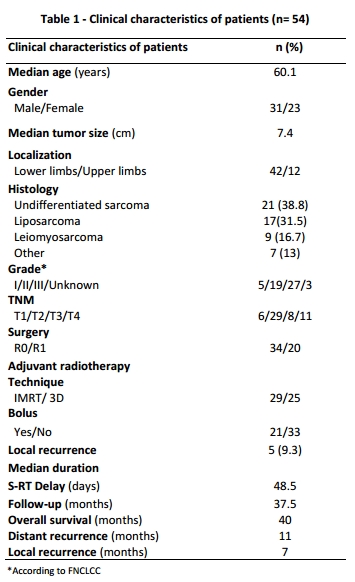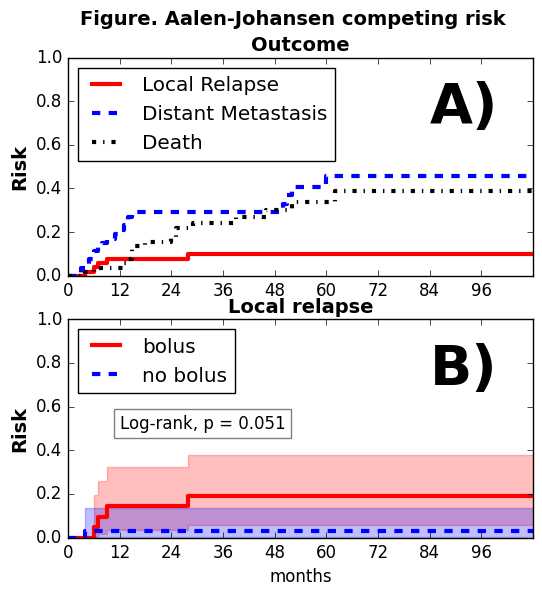Outcome and toxicity after adjuvant radiotherapy +/- bolus for extremity soft tissue sarcomas
Marie-Elise Delavigne,
Belgium
PO-1560
Abstract
Outcome and toxicity after adjuvant radiotherapy +/- bolus for extremity soft tissue sarcomas
Authors: Marie-Elise Delavigne1, Akos Gulyban2, Felix Shumelinsky3, Sylvie Beauvois1, Clémence Al Wardi1, Dirk Van Gestel1
1Institut Jules Bordet, Radiation Oncology Department, Brussels, Belgium; 2Institut Jules Bordet, Medical Physics Department, Brussels, Belgium; 3Institut Jules Bordet, Orthopaedic Oncology Surgery Department, Brussels, Belgium
Show Affiliations
Hide Affiliations
Purpose or Objective
To evaluate the local control (LC), distant metastasis free survival (DMFS) and overall survival (OS) of extremity soft tissue sarcomas (ESTS) treated with adjuvant radiotherapy (RT) at our institution. Furthermore we will evaluate factors influencing outcome and report on toxicity, especially regarding the use of a bolus.
Material and Methods
Patients with ESTS treated with adjuvant radiotherapy between 01/2005 and 08/2022 were included in this retrospective study. Histology, tumor, localization, grade, surgical margin, start of RT, RT technique (VMAT or 3DCRT), dosimetry information and the use of bolus were collected. Aalen-Johansen competing risk analysis was performed for LC, DMFS and OS comparing groups using log-rank test analysis with p<0.05 considered as statistically significant. Dermatitis was evaluated after 3 months, fibrosis and lymphedema at 3, 6, 12 and 24 months.
Results
We identified 54 patients treated with adjuvant RT, with a median follow up 37 months (range 4-140). Additional patient characteristics are presented in the Table 1. All patients received at least 60 Gy. Four patients had a local recurrence and distant metastasis discovered simultaneously, while respectively one and fifteen had an isolated local and distant failure diagnosed. All five local failures (9.3%) were located in depth, four of them being irradiated with a bolus. Distant metastasis (35.2%) occurred in lung (n=16), liver (n=1) and bone (n=2). In total, there were 16 disease-related deaths (29.6%). For LC and OS worst outcome was observed in patients with a positive surgical margin (p=0.017 and p =0.048, respectively). The absence of a bolus did not worsen the LC (Figure 1B). No other characteristic (gender, tumor , RT technique, histology, tumor grade) showed a significant impact on the outcome. Grade ≥2 toxicities (with/without bolus) at 3 months were 19 (10/9) and 17 (11/6) for dermatitis, similar to fibrosis with 20 (11/9) and 1 (1/0) respectively. While for lymphedema no relevant differences were observed with 15 (8/7) and 4 (2/2) grade 2 and 3 toxicity respectively. We did not observe any grade 3 toxicity after 6 months.


Conclusion
A positive resection margin has a negative impact on the overall survival and local recurrence of patients with extremity soft tissue sarcomas receiving adjuvant radiotherapy. The absence of a bolus does not seem to worsen the local control, hence should be avoided due to increased frequency of toxicity. Further large-scale research with long-term follow-up is necessary.